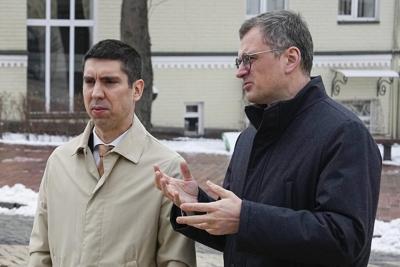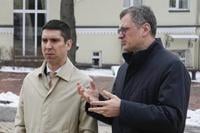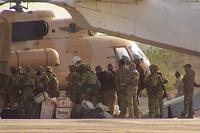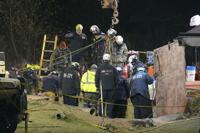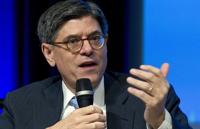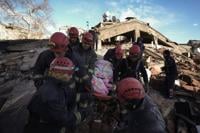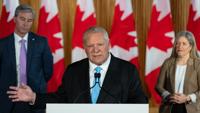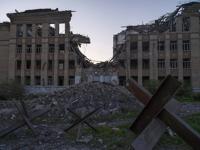Since Russia invaded Ukraine two years ago, fears have risen in neighboring Moldova that it could also be in Moscow’s crosshairs.
Like Ukraine, is a former Soviet republic that has aligned itself with the West and aspires to join the . And both countries hope to eventually reintegrate Russian-speaking breakaway territories that view Moscow as their protector.
After a short war in the early 1990s, Transnistria declared independence from Moldova, where today’s pro-Western government has firmly opposed war with Ukraine.
Although Transnistria’s independence isn’t recognized by any U.N. member countries, including Russia, the Kremlin-friendly territory has become a source of tension during the war, especially since it is wedged between Moldova and Ukraine and is home to a military base with 1,500 Russian troops.
WHY HAS TRANSNISTRIA CAUSED ALARM?
A large majority of Transnistria’s 470,000 people speak Russian as a first language and some 200,000 are Russian citizens who feel a close connection to Russia, though most are also Moldovan citizens. In 2006, more than 95% of voters in a Transnistria referendum said they wanted to join Russia, but the ballot wasn’t internationally recognized.
Since the war in Ukraine started, several developments in Transnistria have led some to draw parallels to the separatist movement by pro-Moscow factions in eastern Ukraine that paved the way for Russia’s full-scale assault.
Just weeks after the invasion, a rocked Transnistria. Last year, an opposition leader there who campaigned for human rights . And this month, an empty helicopter at a military installation was destroyed in what Transnistria officials but what Moldovan authorities allege was a staged explosion meant to inflame tensions.
“More such actions are planned by the Russian Federation” in Transnistria, Moldova’s Bureau for Reintegration Policies said in a statement Monday. The bureau, which works to reintegrate Transnistria into Moldova, added that with Russia unable to attack Moldova militarily, “such actions are aimed at increasing panic, inducing mistrust in society and weakening the economy.”
The separatist region also made headlines last month when authorities used a rare to appeal to Moscow for “protection” due to what they said was increased pressure from Moldova. The appeal stopped short of asking Russia to annex the territory, allaying fears in Moldova, which dismissed the event as propaganda.
The Kremlin routinely denies that it is trying to destabilize Moldova, but last week, Moldova after Moscow opened six polling stations for its presidential election in Transnistria.
DOES RUSSIA HAVE AMBITIONS IN TRANSNISTRIA?
Russian forces have made territorial gains in Ukraine in recent months after failed to yield significant battlefield gains. But to reach Transnistria from Ukraine, Russian forces would need to capture Ukraine’s Black Sea coast, including the major port city of , to create a land corridor to the region.
In an interview with The Associated Press, , didn’t play down the threat that Russia poses to Moldova.
“It’s not whether the Russians would want to come … and violate our sovereignty — it’s a matter of whether they could,” Popsoi said. “As long as Ukraine is resolute in its resistance and defending its territory, and as long as the West is willing to provide enough support for Ukraine, ... then we remain safe.”
Moldova has faced a litany of crises amid the war next door. These include , a after Moscow dramatically reduced gas supplies, rampant inflation and recurring anti-government .
Military aggression may not be in Russia’s interest since it is already “pretty effectively” destabilizing Moldova “without attacking Moldova,” said Alexandra Vacroux, executive director of the Davis Center for Russian and Eurasian Studies at Harvard University. “I don’t see it,” she added.
WHAT COULD PUTIN ACTUALLY DO IN THE BREAKAWAY REGION?
Moldova’s government asserts that Moscow is conducting a broad “hybrid war” against their country by funding anti-government protests, , and running vast disinformation campaigns to and derail Moldova's EU aspirations.
Earlier this month, Moldova’s national intelligence agency said it had gathered data to launch a fresh and sprawling destabilization campaign as Moldova gears up for an EU membership referendum and a presidential election.
“We’re counting on our society and our partners to help us continue to build resilience … so that we can be more effective in preventing and combatting all these hybrid threats,” Popsoi said.
IS THE HELICOPTER INCIDENT CAUSE FOR CONCERN?
After Transnistrian authorities blamed the helicopter incident on Ukraine, Moldova quickly denied that any attack occurred and called it “an attempt to cause fear and panic in the region.”
The reintegration bureau said that after analyzing footage of the parked helicopter bursting into flame, there were indications that the fire was “caused by factors other than the drone,” but it didn’t specify what caused the blaze.
Popsoi, 37, said the incident — which occurred on the final day of — “looked as staged as they come,” but that the “hysteria and panic is understandable” given the proximity of Russia’s war.
Moldova said the helicopter had been decommissioned for several years. “It seems like they added fuel to that helicopter … just to have a nicer explosion for cinematographic effect,” Popsoi said.
WILL THE OLD “FROZEN CONFLICT” THAW ANYTIME SOON?
Ion Marandici, a scholar who studies conflict resolution and Eastern Europe, said he's skeptical that Transnistria could be reintegrated into Moldova by 2030, when Moldova hopes to become a full EU member.
"The conflict can be managed successfully, but it cannot be resolved at this time due to the deep-seated distrust and the sacrifices that neither side is willing to make,” he said. “Reintegration would mean a weakening of (Moldova’s) pro-EU parties and a consolidation of their political opponents.”
Popsoi said the EU has assured Moldova that the Transnistria issue will not prevent the country from joining the EU “per se” and that the process could instead make reintegration with Moldova more attractive for the breakaway region, since 70% of Transnistria's exports end up in the EU.
“We are committed to a peaceful settlement,” he said. “There is this constant struggle there between more reasonable economy-driven folks, and there is the more security establishment, pro-Russian hawks there that are looking for escalation, looking to cause trouble.”
___
Associated Press reporter James Heintz contributed from Tallinn, Estonia.

